The Prize’s Legacy: Bill Phillips
Laser trapping and cooling technologies emerging from the experiments that earned the 1997 Nobel Prize in Physics have become basic tools of atomic physics. Such systems have enabled remarkable new investigations of quantum phenomena, as well as increasingly precise control of atoms themselves.
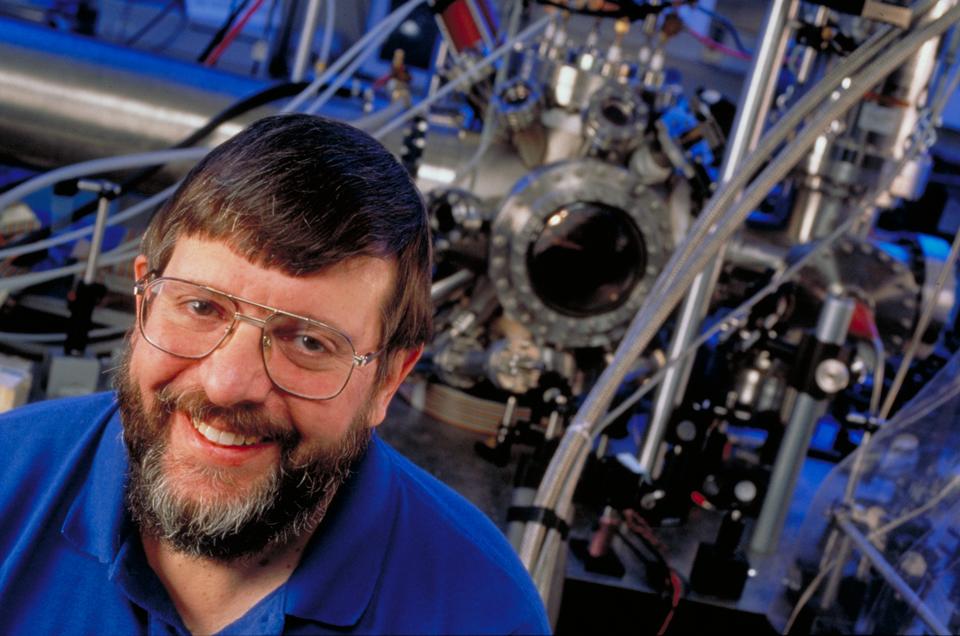
Scientists at NIST and elsewhere have used such control, as well as other advances, to develop experimental atomic clocks based on measuring transition frequencies of atoms and ions that occur at optical frequencies—frequencies around 500 terahertz (500 trillion cycles per second), corresponding to visible light. Such instruments are now about 100 times more accurate than today’s cesium-fountain clocks, which rely on a microwave-frequency transition at around nine billion cycles per second. Laser-cooled atomic-fountain clocks presently provide the world’s best time and frequency standards because the current definition of the second is based on cesium atoms, which are used in the clocks. Optical clocks promise to lead to even better time and frequency standards in the future.
Although Phillips in 1978 could not have imagined today’s optical clocks or even the atomic fountain clocks that preceded them, his original suspicion that trapping atoms would lead to better atomic clocks ultimately played out.
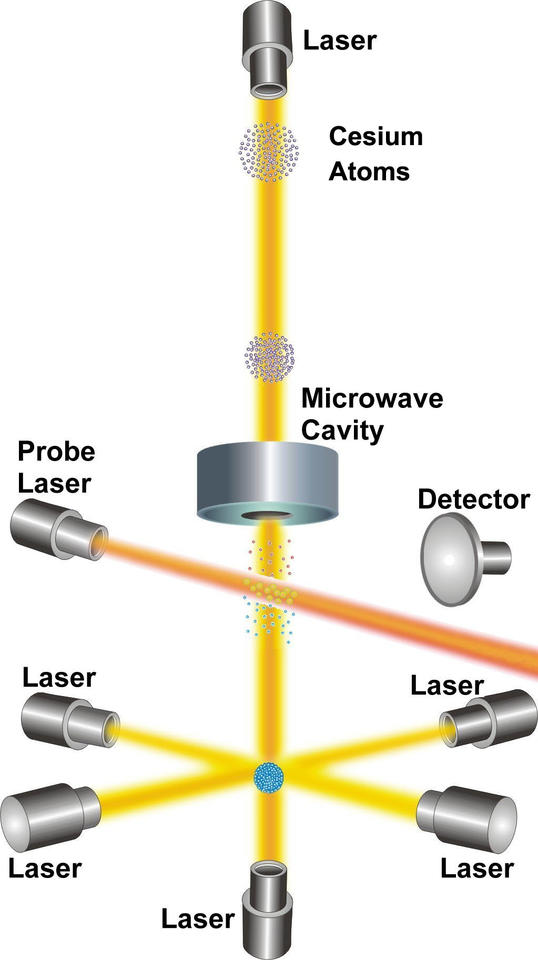
“Maybe if we’d really thought carefully about it in terms of making an atomic clock, we would have said, ‘Well, that’s not going to work. Let’s just forget that and go on to something else,’” Phillips says. “But we didn’t.
“For any organization that wants to be at the frontiers—and NIST, because our job is to provide the cutting edge of measurement science, we have to be at the frontiers—you have to do a certain amount of research that you don’t really know where it’s leading,” Phillips adds. “And that’s what we were doing a lot of the time. We were just following leads because it was something that looked interesting and that it ought to be useful. And what it led us to is exactly where we wanted to be.”
JILA fellow Eric Cornell, who received the 2001 Nobel Prize in Physics, adds that NIST’s emphasis on precise measurement played a decisive role.
“I think this culture of measuring things carefully is just a good idea for science in general,” Cornell says. “If you look at Bill Phillips’ big breakthrough, there was this theoretical prediction of how cold the atoms ought to get. Bill said, ‘Let’s measure this.’ That was a NIST thing.”
“This is Bill’s curiosity,” says Carl Williams, deputy director of NIST’s Physical Measurement Laboratory, “his wanting to be sure that even if we don’t understand why things are [the way they are], that we’ve got the right result.”
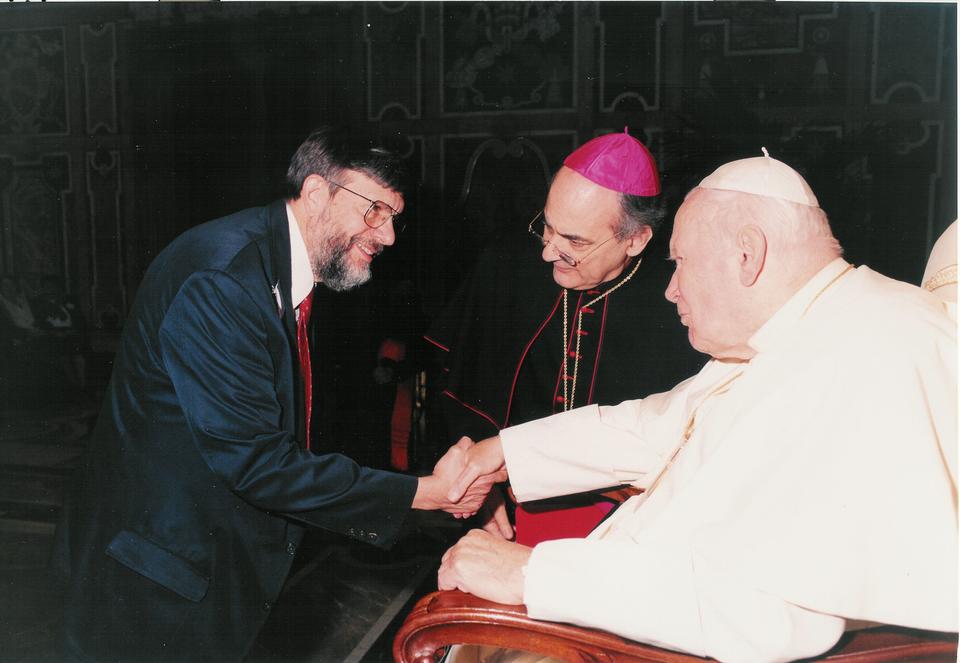
In addition to enabling new kinds of clocks, laser trapping and cooling have helped open up important new research areas, including quantum simulation, in which scientists use atoms to study more complicated materials, and quantum computing, in which scientists are attempting to develop devices that can solve certain problems much faster than current computers. Much of the progress in these areas has built on a synthesis of two very different breakthroughs credited in part to NIST.
The first was the optical lattice, created by Phillips and his colleagues in the late 1980s. JILA Fellow Jun Ye and his colleagues have used optical lattices to make ultra-precise atomic clocks that may lead to future time standards. Working with the late Deborah Jin and their groups at JILA, they have also used optical lattices to control and study chemical reactions in molecules and other many-body systems.
A second advance was the Bose-Einstein condensate (BEC), which JILA Fellow Eric Cornell and his colleagues first produced in 1995, almost 20 years after Phillips took early stabs at one when he was still at MIT. Laser cooling and magnetic trapping were among the techniques critical to producing the first BECs.
Around this time, Phillips and his colleagues were studying collisions of laser-cooled sodium atoms. After Cornell’s announcement, Phillips’ group almost immediately began making its own BEC research program with sodium, applying results from their atom-collision studies.
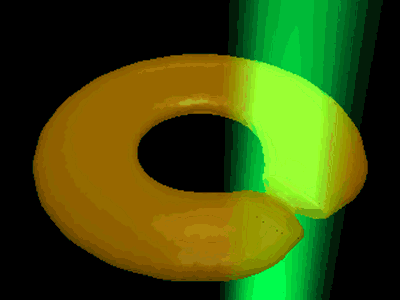
Today, Phillips’ group at the NIST-University of Maryland Joint Quantum Institute (JQI) coaxes Bose-Einstein condensates into optical lattices to do their quantum simulations. Among the dreams that Phillips and others have is to use cold atoms in optical lattices to shed light on high-temperature superconductors, which conduct electricity without resistance at temperatures far higher than previous superconductors. Such materials could revolutionize electronics, except that nobody understands how they work or how to design new ones. BECs in optical lattices turn out to be an ideal way to test one important theoretical model for high-temperature superconductivity.
“It’s one of the most dramatic things” that could emerge from quantum simulation, Phillips says.
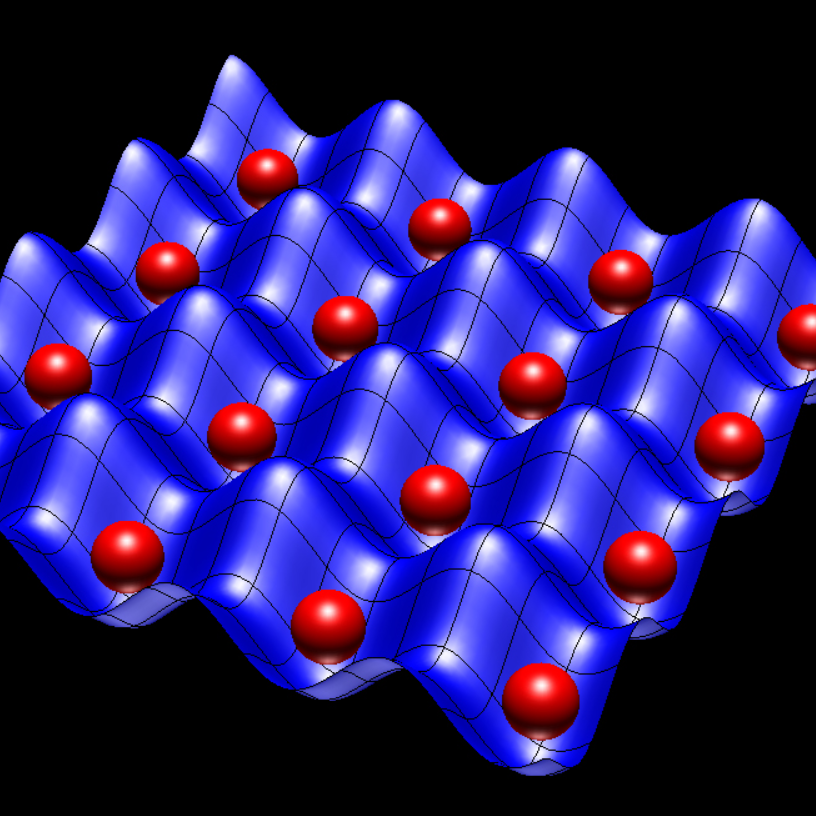
Another avenue Phillips is pursuing, in collaboration with JQI colleague Gretchen Campbell, is “atomtronics”—making circuits that conduct BECs, rather than the usual electrons. By having ultra-cold superfluid atoms move around in ring-shaped traps without resistance, Phillips and Campbell are able to mimic exotic, hard-to-study materials such as superconductors and superfluids—very cold fluids that flow with any viscosity.
“We get to control the behavior of things that aren’t available to us with electrons,” Phillips says.
In this way, Phillips and others are helping unite two major areas of physics: atomic physics, where he has made his career, and condensed matter physics, the study of solids and liquids that underlies much of our technology. Quantum simulation, first proposed by the famous theoretical physicist Richard Feynman in 1982, is still in its infancy, and its ultimate promise is as unclear as the potential of trapped atoms was when Phillips began studying them in 1978, he says.
“We don’t know where it’s going to lead.”
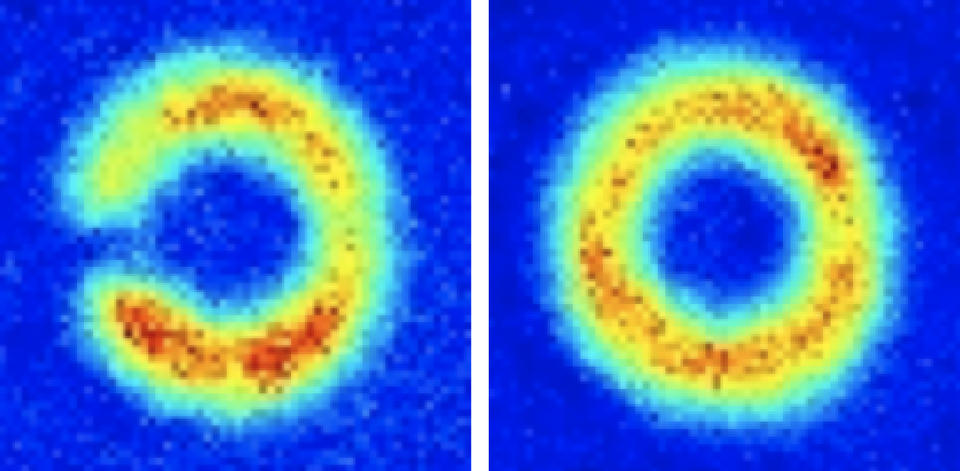
Phillips is also exploring quantum computing, in which scientists manipulate atoms and other quantum systems to harness their strange behaviors. The aim is to develop machines capable of quickly solving problems that would take conventional computers an impractically long time.
While the full impact of Phillips’ latest work has yet to be seen, the Nobel Prize has thrust him permanently into the public sphere.
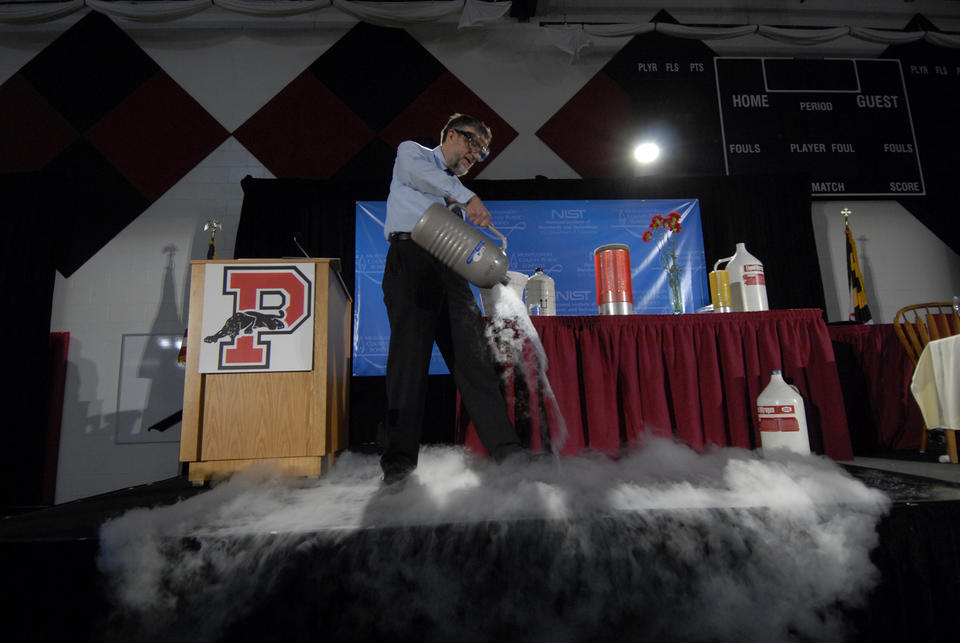
When Phillips talks to groups, whether of middle school students or Ph.D. physicists, he leaves them with advice we might all take to heart: “Keep your curiosity about the way nature works. Kids have it innately. Kids who become scientists have kept it.”
“One of the things that makes Bill special is that he is so dedicated to young people. He plays a really large role in inspiring people to go into physics or stay in physics. When Bill goes to a conference he makes it a point to talk to as many young people as possible. It’s incredibly inspirational.”
– Gretchen Campbell, physicist, co-director, Joint Quantum Institute
Additional Sources
S. Chu, “Laser Trapping of Neutral Particles” Scientific American, February 1992.
C.N. Cohen-Tannoudji and W.D. Phillips, “New Mechanisms for Laser Cooling,” Physics Today, October 1990.
Laser Cooling and Trapping Group. NIST Web. https://www.nist.gov/pml/quantum-measurement-division/laser-cooling-and-trapping
W.D. Phillips and H.J. Metcalf, “Cooling and Trapping Atoms,” Scientific American, March 1987.
W.D. Phillips – Nobel Lecture: “Laser Cooling and Trapping of Neutral Atoms.” Nobelprize.org. Nobel Media AB 2014. Web. Accessed 31 March 2017. http://www.nobelprize.org/nobel_prizes/physics/laureates/1997/phillips-lecture.html
W.D. Phillips – Biographical. Nobelprize.org. Nobel Media AB 2014. Web. http://www.nobelprize.org/nobel_prizes/physics/laureates/1997/phillips-bio.html

